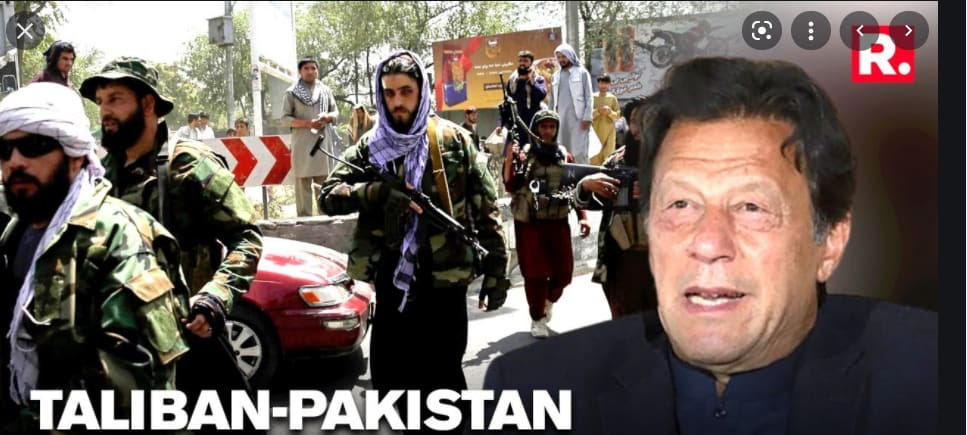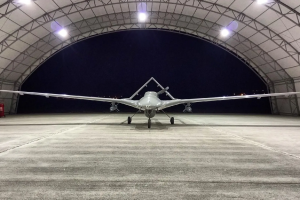Recent attacks on Kabul’s international airport by the Islamic State’s Afghan affiliate raise multiple questions as well as the spectre of paradigm shifts in the drivers and expanding geography of political violence.
The attacks have called into question the Taliban’s ability to maintain security and keep a lid on the activities of multiple militant groups in Afghanistan. Long at war with the Islamic State (IS), the Taliban have promised to ensure that neither IS nor groups with which it maintains good relations will be allowed to use the Central Asian state for cross border attacks in the region.
That may be easier said than done even though Al Qaeda, which launched the most spectacular and successful of jihadist attacks on 9/11 almost two decades ago, may turn out to be the least of the Taliban’s jihadist worries.
Analyst Abdul Sayed noted that Al Qaeda, in an effort to prevent the United States from driving it out of Afghanistan and Pakistan, has “shifted focus from global terrorist attacks and external operations to supporting local jihadist groups throughout South Asia, and fuelling the narratives that underpin their objectives. This shift helped build resilience, allowing al-Qaeda to survive despite the massive blows inflicted by the United States and its allies.”
The shift was further driven by the success of Western counter-terrorism agencies in reducing Al Qaeda’s ability to attack the West. “2011 did mark the end of al Qaeda’s war on the West. The group lives on as a set of regional militias with local agendas in places such as Somalia, but it has not successfully conducted a serious attack on the West for almost a decade,” said political violence scholar Thomas Hegghammer.
Mr. Hegghammer went on to say that “by 2018, the number of jihadi plots and attacks in Europe had been cut in half compared to 2016, and the flow of foreign fighters had dried up entirely. What is more remarkable, every jihadi assault in Europe since 2017 has been carried out by a lone individual, suggesting that it has become very difficult to plan group attacks. Similarly, no terrorist strike since 2017 has involved explosives: instead, the attackers have used simpler weapons, such as guns, knives, and vehicles.”
By the same token, Western successes have persuaded most analysts that the Islamic State, like Al Qaeda, is unlikely to be able to launch trans-national attacks in the West from Afghanistan any time soon.
As a result, the Taliban’s security problems are likely to be domestic and regional rather than hail from transnational jihadist groups who have long dominated analysis of and discourse about political violence.
What that means in practice is that the Taliban’s war with the Islamic State will be a domestic fight that could threaten efforts to stabilize the country and ensure good relations with Afghanistan’s neighbours.
The Islamic State is banking on the hope that disgruntled Taliban unhappy with a movement that once in government could be forced to compromise on its principles and moderate its policies will join its ranks.
Foreign fighters such as the Uighurs may also opt to throw in their lot with the Islamic State, which in the past has threatened China. Discontent members of ethnic minorities could do the same or join groups like the Islamic Movement of Uzbekistan (IMU) which has a presence in Afghanistan.
The Taliban are expected to include representatives of ethnic minorities in their government in a nod to both various segments of the population as well as Afghanistan’s neighbours.
“ISIS-K will try to assassinate Taliban leaders behaving in a pragmatic manner. Mullah Baradar is likely a key target particularly in the light of his meeting with D/CIA last Mon. Eliminating Baradar helps ISIS-K undermine Taliban efforts to consolidate power,” tweeted South Asia scholar, Kamran Bokhari referring to a commonly used acronym for the Islamic State in Afghanistan.
A co-founder of the Taliban, Abdul Ghani Baradar is widely viewed as a compromiser and problem solver. He reportedly met last week with CIA Director William J. Burns.
Al Qaeda’s local focus; the fact that Uighur, Uzbek and other Central Asians may concentrate on their own countries; and the Islamic State’s limited capability suggest a potential paradigm shift in the drivers and expanding geography of political violence in South and Central Asia.
The shift could be boosted by the perceived defeat of the United States, the second superpower to bite the dust in Afghanistan in a war against Islamic militants. The American withdrawal means that the US no longer is a prime target in the region.
In discussing the fallout for Pakistan of the Taliban victory, analysts have by and large focussed on Pakistan as fertile ground for the spread of Taliban-style religious ultra-conservatism as well as concerns that it would enable, Tehrik-i-Taliban Pakistan (TTP), more commonly known as the Pakistani Taliban, to rekindle their campaign of attacks in Pakistan.
The TTP is a coalition of Pashtun Islamist groups with close ties to the Afghan Taliban that last year joined forces with several other militant Pakistani groups, including Lashkar-e-Jhangvi, a violently anti-Shiite Sunni Muslim supremacist organization.
Taliban spokesman Zabihullah Mujahid left the door open on the Taliban’s relationship with the TTP.
“The issue of the TTP is one that Pakistan will have to deal with, not Afghanistan. It is up to Pakistan, and Pakistani Islamic scholars and religious figures, not the Taliban, to decide on the legitimacy or illegitimacy of their war and to formulate a strategy in response,” Mr. Mujahid told a Pakistani tv program. The spokesman stopped short of saying whether the Taliban would abide by a decision of the scholars.
The Taliban reportedly have advised the TTP to restrict their fight to Pakistani soil and have offered to negotiate with the Pakistan government an amnesty and the return of the Pakistani militants to the South Asian nation,” according to Afghan sources.
The TTP is believed to be responsible for the killing this week of two Pakistani soldiers on the border with Afghanistan.
“Our fight against Pakistan will continue until we establish it as an Islamic state. We will not spare their dollar-dependent soldiers and politicians,” said TTP commander Molvi Faqeer Mohamad.
A wanted man in Pakistan, Mr. Mohamad was speaking to Al Jazeera after having been freed from jail in one of the Taliban’s many prison breaks. The US-backed government of Ashraf Ghani had refused to extradite Mr. Mohamad to Pakistan.
Only a few analysts have pointed to what would constitute the greatest threat to Pakistan: the potential coalescing of a campaign of TTP violence with the notion of merging Pashtun-populated areas of Pakistan with Afghanistan.
The intertwining of Pashtun national identity and Islam resounds in a Pashto poem quoted by Anas Haqqani, a senior Taliban official and brother of Sirajuddin Haqqani, the group’s deputy leader: “The essence of my Pashto is so Islamic, Were there no Islam, I would still be a Muslim,” a couplet of the poem says. Mr. Haqqani quoted the couplet while discussing Pashtun identity with no reference to geopolitics.
“Pashtuns of the Afghan Taliban will, after a few years in power, find common cause with their Pashtun kinsmen in Pakistan… There are plenty of Pakistani Pashtuns who would prefer the whole of Khyber Pakhtunkhwa (formerly North-West Frontier Province) to be part of a wider Pashtunistan,” predicted scholar and former British ambassador to Pakistan Tim Willasey-Wilsey.
Other analysts have privately argued that a Pakistan-dominated Pashtunistan embedded in a broader Asian confederation would counter the various threats Pakistan is concerned about, including the TTP, ultra-conservatism, and secession.
The views of these analysts embody the Pakistani military and government’s worst fears: the undermining of Islam as Pakistan’s glue by ethnic cleavages. It is a fear that was first expressed by Mohammad Ali Jinnah, the country’s founder who warned against the “poison of provincialism.” The fear has been reinforced by the secession of predominantly Bengal East Pakistan to form Bangladesh in 1971.
“The time is now ripe for America and its allies to marginalize the remnants of radical Islamdom in South-Central Asia as a first step in generating a mega-confederation of free peoples extending from Pashtunistan in the West all the way to and including Indonesia in the East,” said a former Western government official-turned-scholar.
“The key step for Pakistan in countering the extremism of radical Muslims trained by the Saudi Wahhabis is simply to absorb the western half of Pashtunistan, which includes the southern two-thirds of Afghanistan, and the eastern half which makes up most of the western third of Pakistan, into a new Province of Pashtunistan in a greater Pakistan confederation as a model for the world and especially for the looser confederation extending across India to Indonesia,” the scholar said.
Pakistan last year cracked down on the Pashtun Tahafuz (Protection) Movement, or PTM, a non-violent protest movement demanding rights for Pashtuns in Pakistan’s former Federally Administered Tribal Areas.
Pakistan is completing a physical barrier to any changes along the Durand Line that separates it from Afghanistan, the country’s longest border, with the construction of a US$500 million, 2,600-kilometre-long wall.
The wall, conceived to keep militants and potential refugees on the Afghan side of the border, is being bolstered by state-of-the-art surveillance technology and multiple fortresses. Pakistan has closed 75 of its 78 border crossings in the wake of the Taliban takeover.
Much of the border is mountainous and in the words of a former Pakistani military officer “good territory for guerrillas to operate and hide in.”
The notion of Pashtunistan or a confederation that includes archrivals Pakistan and India as well as countries as diverse as Indonesia may be far-fetched to say the least but is certain to ring bells in Islambad.
Those bells may already be ring after Taliban official Sher Mohammed Abbas Stanekzai declared in a rare statement on foreign policy that “we give due importance to our political, economic and trade ties with India and we want these ties to continue. We are looking forward to working with India in this regard.”
Said scholar and author Pervez Hoodbhoy: “Like it or not, AfPak has become reality. Despised in Pakistan because of its American origin, this term rings true. Geographical proximity is now augmented by the ideological proximity of rulers in both countries. Taliban-style thinking is bound to spread through the length and breadth of Pakistan.”
AfPak was a term used by the US government to signal that Afghanistan and Pakistan constituted a single theatre of operations in the war on terror.






